How to Make Compost - Beginner's Guide
How do you make compost from the beginning? Follow along as I make compost from scratch and share my best tips!
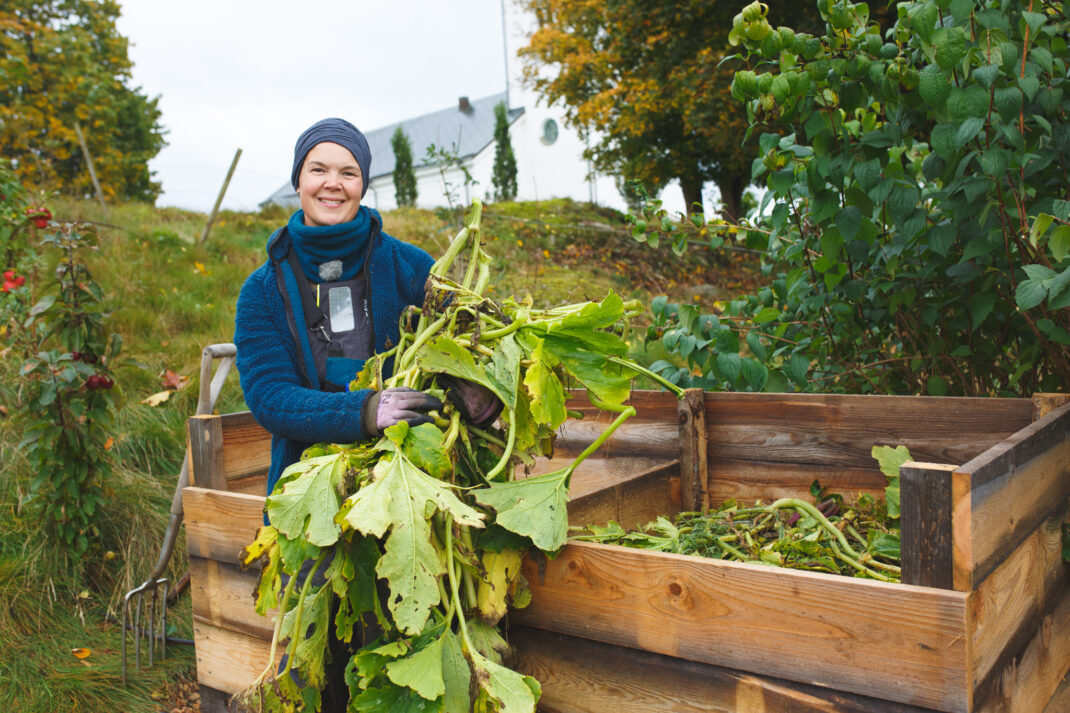
My composting needs have changed these last few years, with my ever-expanding growing areas. I have been managing quite well using the old plant material for my mulched beds, but now that I have the old summer flowers, perennials and large bushes in the garden, I need to make compost and build more compost bins. I'm going to talk more about how to make compost from the beginning in this post. So, keep reading!
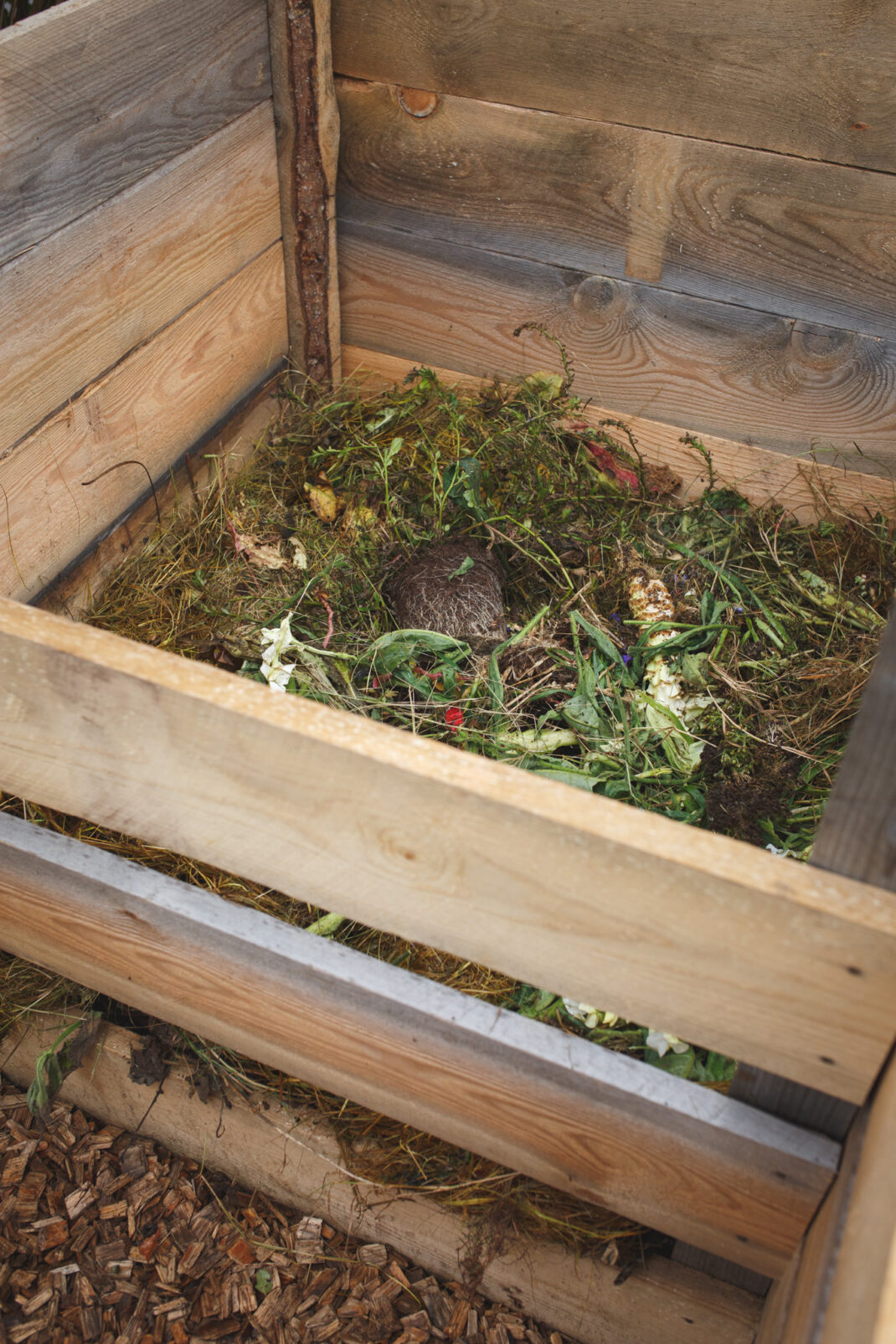
Each bin/compartment holds about 35 cubic feet of plant material, and later soil. Here, I started on a new bin with some plant material at the bottom. Photo: Ida Sjöö.
Make compost any time
Any time is the best time to start composting! It doesn't matter if it is the middle of the summer or the very end of fall. You can get started whenever you want, as long as you have something to compost of course. If you're currently building a compost bin, you can save your materials in sacks or temporary piles so that you have something to add to the compost when the time comes.
But before you start composting, remember to take a look at the bottom of the bins. Where did you decide to make your compost pile, and what does the ground below look like? If you created it in a space with a lot of weeds or other plants that might start growing in your pile, you might have to intervene. You can always cover the bottom with cardboard or newspapers before you get started. The protective layer will smother the weeds underneath before they can spread into the pile.
Remember that the compost pile still needs some direct contact with the ground so that worms and insects can move in and out of your compost, and any excess water can drain. My compost pile was created on top of a natural woven ground fabric and wood chips. Worms easily crawl through these materials. In one of the bins, I also put some soil that I dug up from the garden. I covered it with cardboard to reduce weeds.
Read more: Growing vegetables in compost
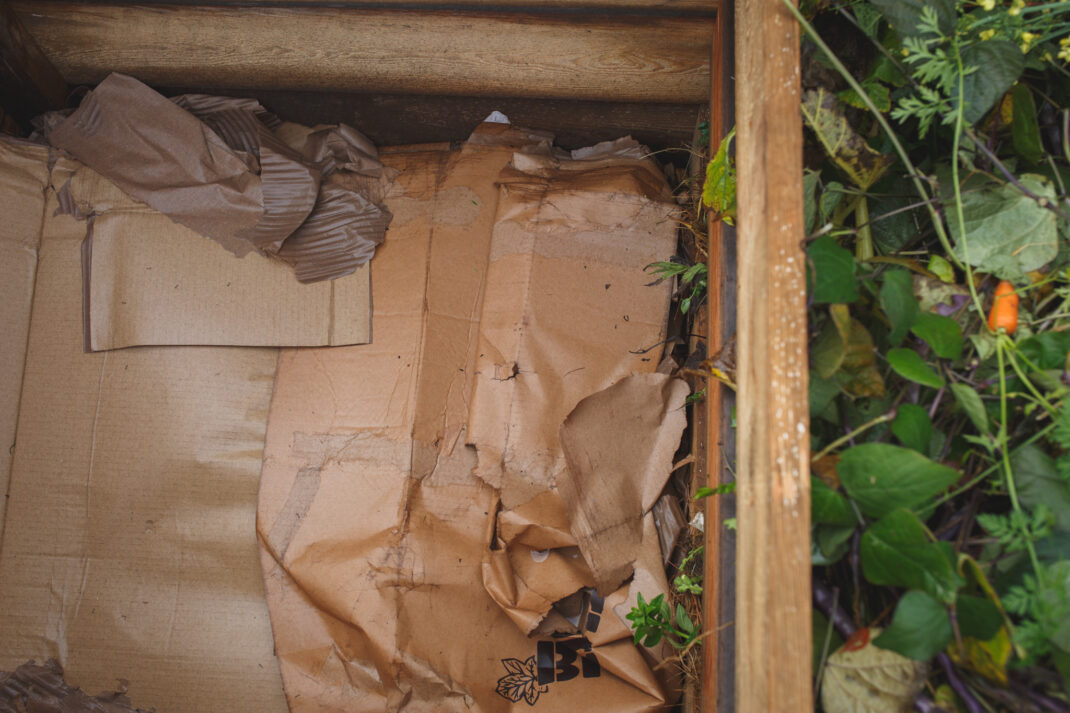
If the compost is placed in an area where weeds can grow in the compost pile, I usually cover the bottom with a layer of newspaper or cardboard before starting the compost. Photo: Ida Sjöö.
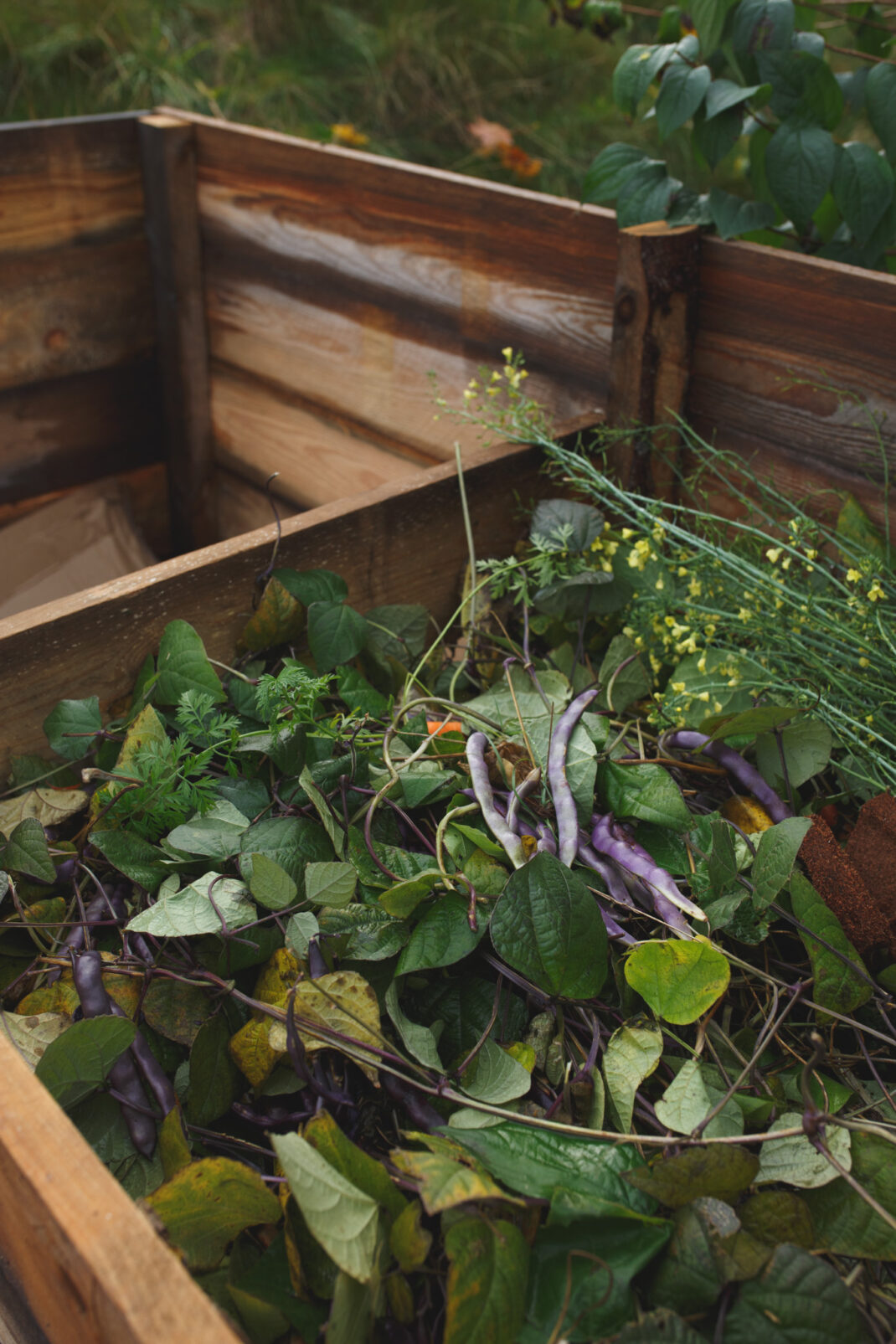
You can put various plant parts in the compost. It doesn't need to be finely divided before adding it to the pile, but it takes up more space if not broken into smaller parts. Photo: Ida Sjöö.
Kickstart your compost
I make my compost bit by bit, based on what is available in the garden right now. The first easy step is to simply put a layer of old plant parts in the bottom, and to spread it evenly over the area.
Consider alternating different materials so that you don't for example put a big bunch of old leaves in at once. If the compost consists of both nitrogen-rich fresh material (such as shoots, grass clippings, and similar directly from the garden) mixed with carbon-rich wilted material (such as leaves, dried grass, and straw), the composting process will be most efficient.
I usually give my compost a kickstart by mixing in some old compost or a handful of worms into the new pile. Doing this speeds up the decomposition of the material! When this compost was brand new, I added a bucket of redworms (small, quick red worms, also called compost worms) from another area of the garden.
Another smart way to give the decomposition process a boost is to water the compost with urine. It contains a lot of nitrogen which usually gets the composting going. :
There are many different products on the market that claim to increase the speed of the decomposition and so on. In my opinion, you don't actually need any of that. Spend your money on something else. In most cases, the composting process is not something you have to worry much about as long as you make sure that:
- you use a good mix of both carbon- and nitrogen-rich materials
- the pile is properly moist, but not too wet
- your pile is the right size for your needs
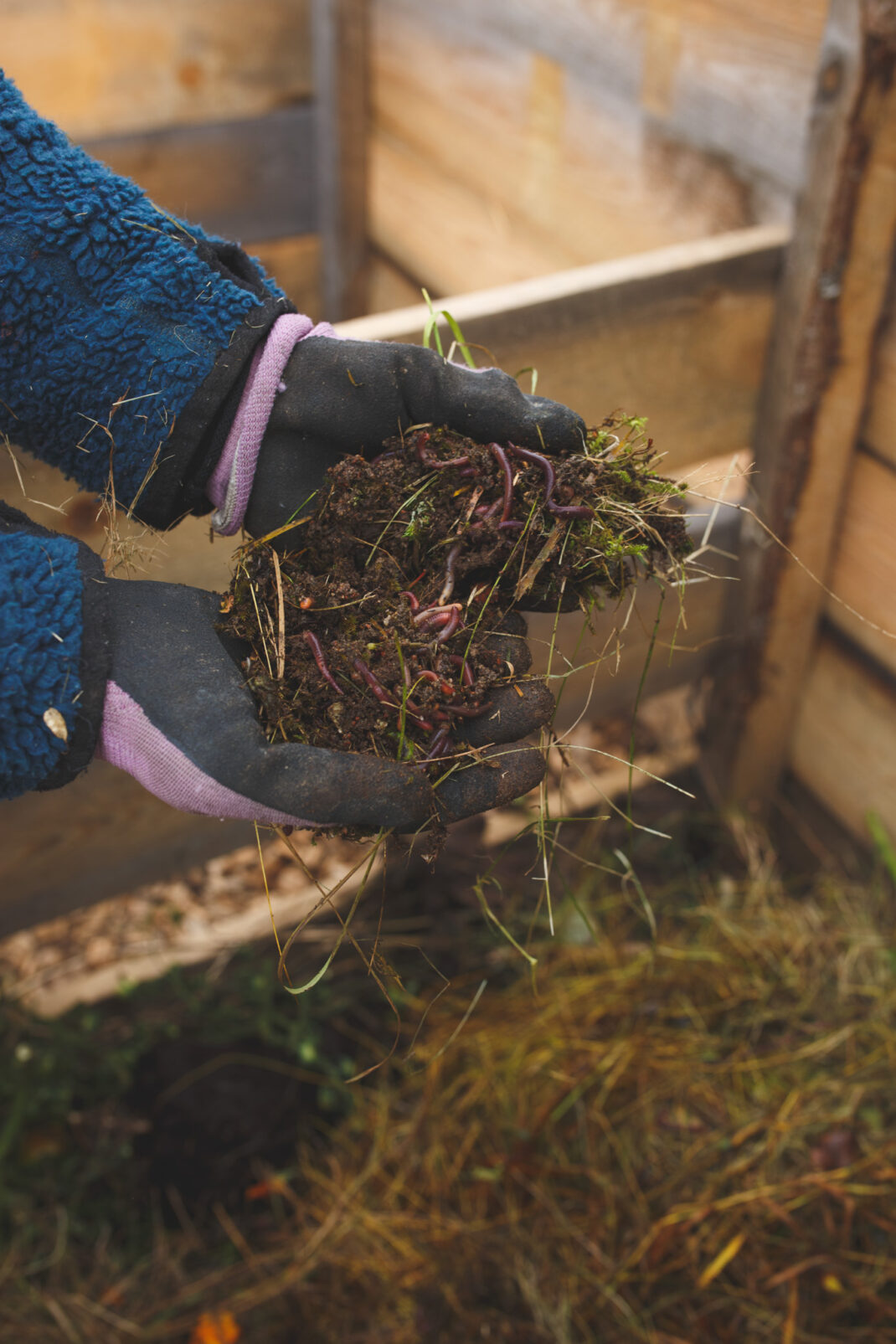
When my compost was new, I added plenty of lively compost worms to kickstart the decomposition. Photo: Ida Sjöö.
Shrinking compost
The compost pile tends to fill up quickly in fall and spring when there is plenty of plant material around to use. One thing to remember though is that the material will shrink, a lot. The material gets compressed the more weight you put on the pile. It just gets a bit flat. Then, the composting process itself will gradually make the material to reduce in volume.
How much shrinkage you get depends on what material the compost pile is made up of. If the material is very airy and light, like squash plants, a lot of it will disappear in the process. A compact pile of old leaves will not shrink as much.
Roughly speaking, up to two-thirds of the original volume disappears before you have your finished soil. This can be good to know if, for example, you fill your raised beds with compost material that you intend to grow in directly, or even bury in the ground.
What to compost?
You usually don't need any particular permits to make compost in your garden. Other rules might apply if you use kitchen scraps in your garden though,
What I use in my compost:
- Plant parts (leaves, stems, roots)'
- Old vegetables
- Wilted summer flowers
- Fresh wood chips
- Straw, hay, silage
- Manure
- Grass clippings
- Leaves
- Sawdust
- Peat
- Kitchen scraps (avoid in densely populated areas, as it may attract pests)
- Bokashi
Read more: How to avoid pests in the compost
Avoid the following:
- Plant parts from invasive plants
- Weeds (can be composted if the heat development is high)
- Ash
- Non-organic materials
I sometimes cheat a little and occasionally mix in a bucket from the kitchen. This works just fine as long as I keep track of the contents and don't accidentally add meat to my compost. When I use kitchen scraps for my compost, I dig a hole in the middle of the pile (right where the heat is building and the decomposition has started), I empty my bucked there and then add a generous layer of plant parts or old compost on top. It only takes a few weeks before the kitchen scraps turn to soil! You can use the same method to add bokashi to your pile. (Just remember to check if you are allowed to do this where you are located.)
Follow me on Youtube here: My channel
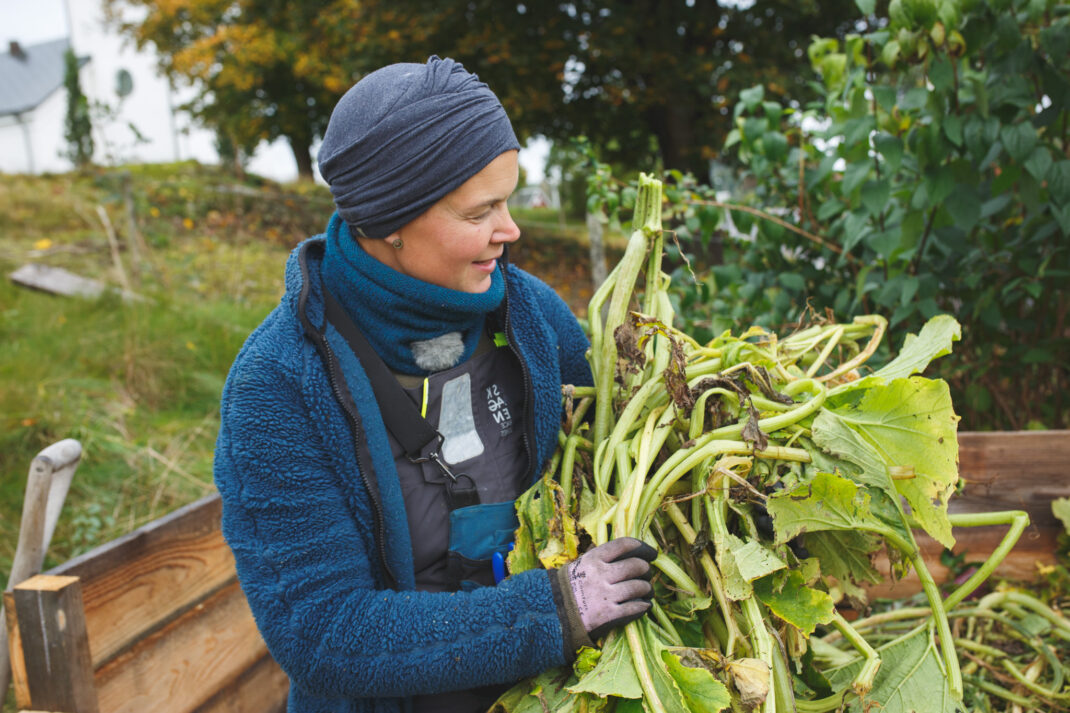
Old squash plants have hollow stems. Even though it initially looks like a lot of plant material, it soon compresses and hardly anything is left. But it works great when you want to make compost! Photo: Ida Sjöö.
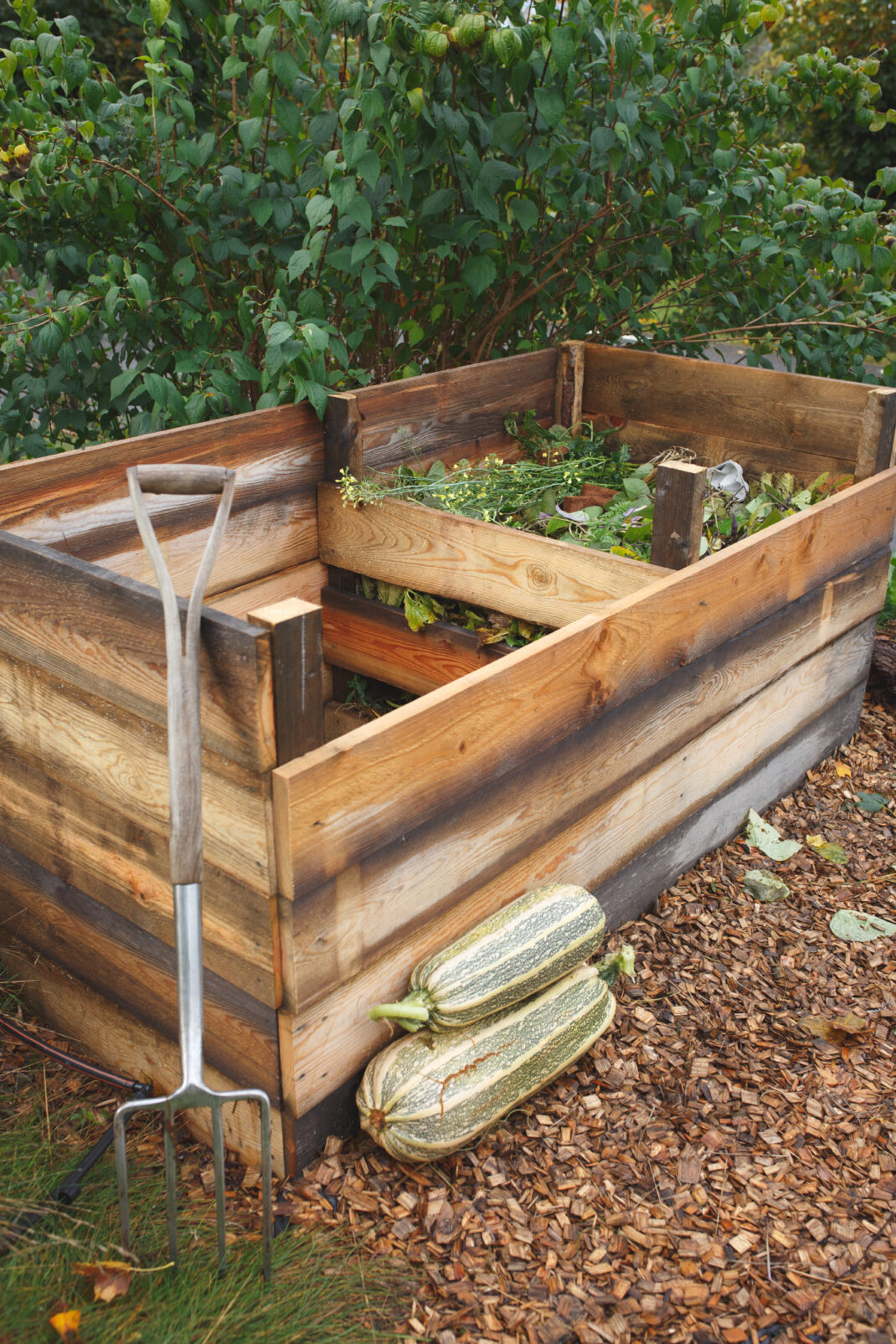
The compost material is airy at first, but gets compressed with time. Photo: Ida Sjöö.
If your compost is full
Now comes the fun part of making compost: filling it up! For me, the compost is as much a dumping ground as a soil factory. It's so satisfying to get rid of all the clutter in my garden. Most of it goes into the compost and is turned into something useful in notime. I love it!
One issue I often encounter though, is that the compost becomes full before I've packed everything I want to get rid of. These are my two solutions to the problem:
Intermediate Storage: Put the compost material you can't fit next to the compost for a while. After a few days, it's usually possible to load much more into the compost when it has settled. It doesn't matter if you let the plant parts sit on the side for a while before you add them to the compost when there is more room.
Compost Grinder: Much more material can fit into the compost if you cut it first. You can cut the material into smaller pieces with pruning shears, but it's much quicker to use a compost grinder. I often use it when in the beginning when I make compost in my garden. The material will decompose a lot faster if you use smaller parts too!
Read more: Quick compost in a styrofoam box
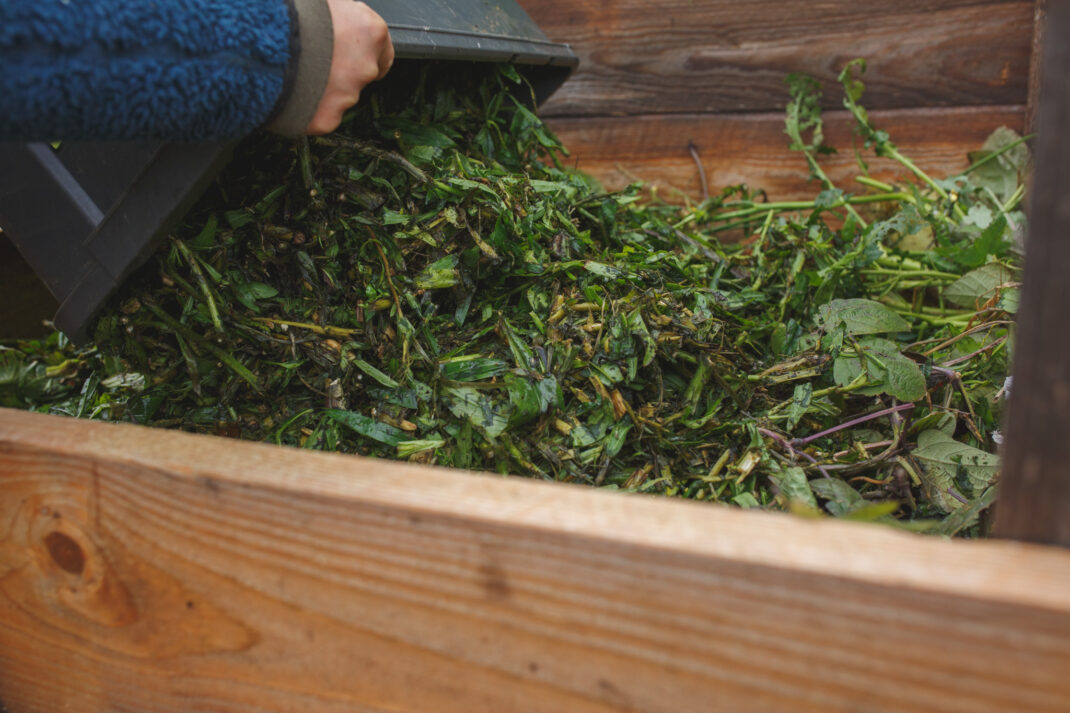
The compost breaks down easier if you cut it into smaller pieces. Photo: Ida Sjöö.
Make compost with compartments
A compost bin with two compartments (or three or more, which is another option) is used in such a way that one compost compartment is filled, and when you can't fit more material, the compost is turned into the empty compartment next to it. This actually helps to aerate the compost. When the compost gets a little extra oxygen, the decomposition process is faster than if the compact pile is left to decompose at its own pace.
You could of course also fill both of the compartments and let the decomposition process take its time without turning the compost. The only downsideto that is that it might take a longer time, and you might also need some more space for your compost.
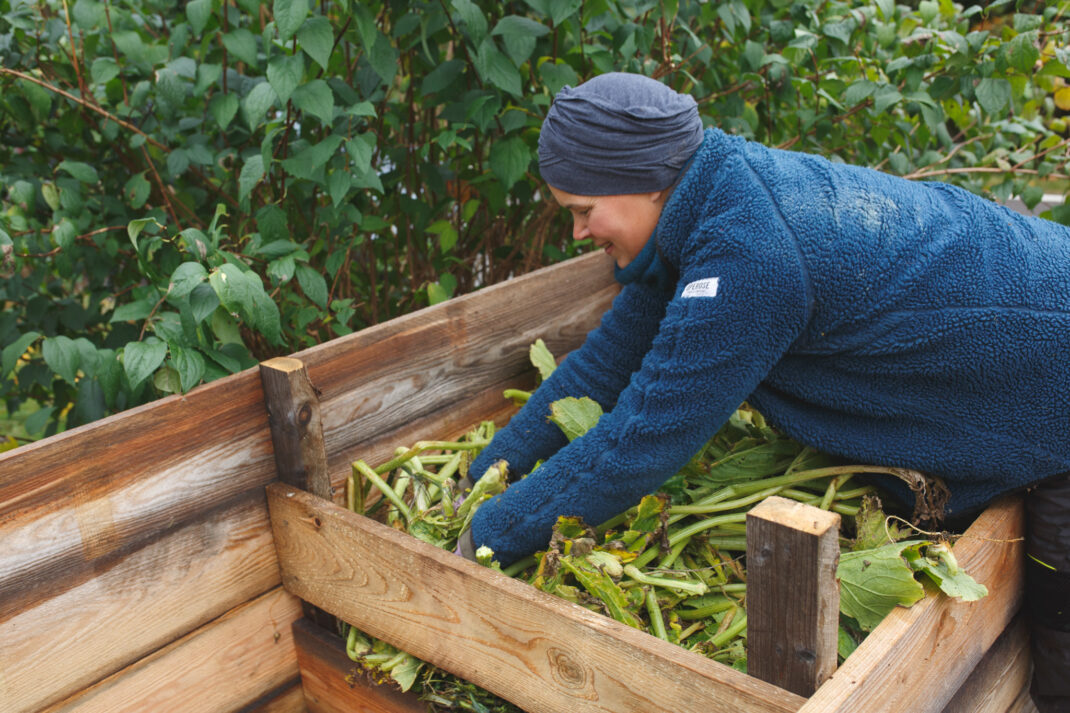
When I make compost, I try to push the material down instead of just dumping it in a pile in the middle. Photo: Ida Sjöö.
Most gardeners have their own methods of disposing different materials in their gardens. I actually have five different compost piles in my garden right, as well as a few mulching projects, and they all work slightly differently depending on what materials I use. Three of the composts are so-called garden composts, where I mainly compost plant parts. You don't actually need a huge garden to produce plenty of material to make compost, I promise! I love that the old material can turn into such an important resource and part of the life cycle of the garden, instead of just ending up at a recycling center or similar.
I'm going to keep writing more about how to make compost here on the blog. I hope you enjoyed this beginner's guide!
/Sara Bäckmo
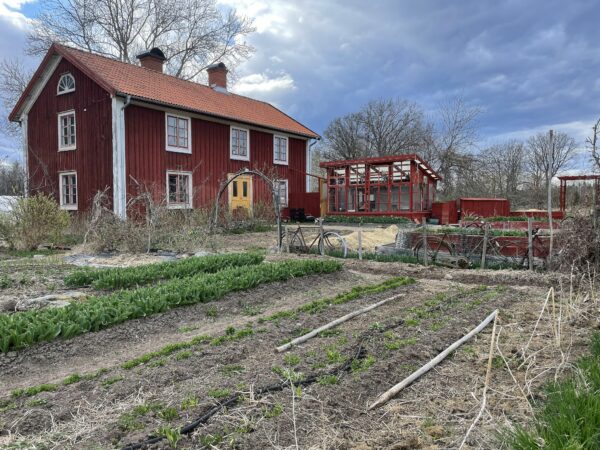
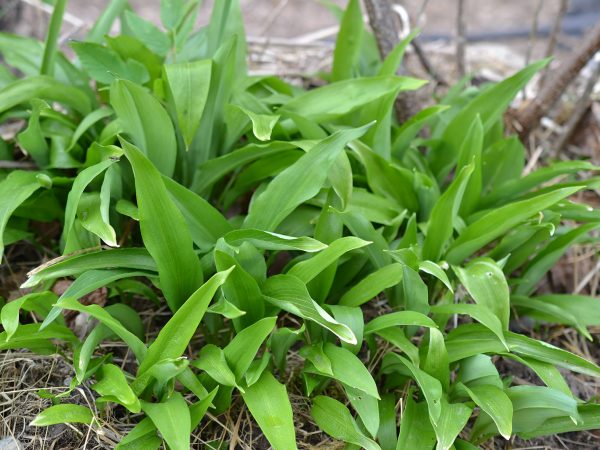
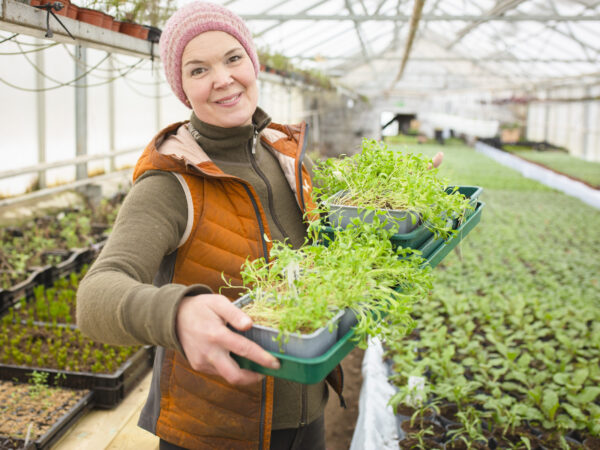
Leave a Reply